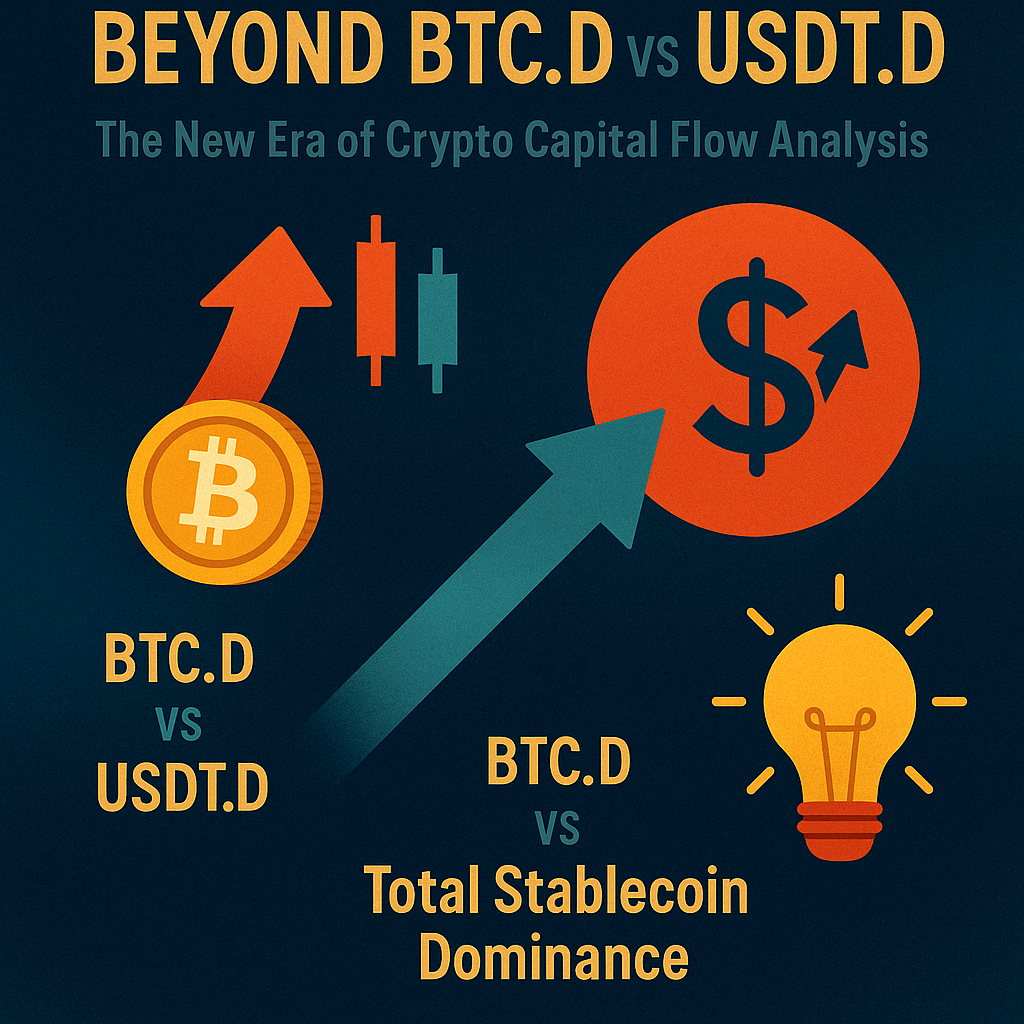No man drifts upward
Evolving Crypto: BTC.D vs USDT.D vs Stablecoin Relevance
Explore the evolution of BTC.D versus USDT.D and the growing importance of stablecoin relevance. High-value gentlemen must adapt their crypto analysis frameworks for effective investment strategies and mastery in today's market.
Randy Miller


“Most men watch price. Assertive men watch behavior.”
In the early days of crypto analysis, two metrics stood tall as sentinels of market sentiment:
BTC Dominance (BTC.D) — a gauge of how much of the total market cap was claimed by Bitcoin
USDT Dominance (USDT.D) — a measure of how much capital was parked in Tether, the oldest and most-used stablecoin
Together, they offered a working model:
When BTC.D rose and USDT.D fell → capital was flowing into Bitcoin.
When BTC.D fell and USDT.D rose → capital was retreating into stable safety.
But times have changed — and so must the tools of the modern crypto tactician.
🧠 The Flaw in the Old Framework
Here’s the raw truth: USDT is no longer the only safe harbor.
Today, the stablecoin landscape is more diverse and fragmented than ever:
USDC — the favored pick among U.S. institutions and compliant DeFi
DAI — decentralized, Ethereum-native, and widely integrated in DeFi platforms
TUSD, FRAX, GUSD — niche but increasingly relevant
Even newer entrants like FDUSD or EURC are gaining ground in certain ecosystems
If you’re still comparing BTC.D solely against USDT.D, you’re working with obsolete coordinates. You’re watching only one valve in a multi-valve pressure system.
This is like judging global liquidity by looking only at the U.S. dollar — ignorance disguised as simplicity.
📊 Stablecoins: The Crypto Cash Stack
To understand the evolution, you must grasp the role of stablecoins in the market machine:
Stablecoins are not passive.
They are capital waiting to be deployed, fear hiding in plain sight, or dry powder stacked for opportunity.
When stablecoin dominance rises, risk is being trimmed.
When it falls, risk is being taken — into Bitcoin, Ethereum, and eventually altcoins.
But USDT alone no longer captures this rotation. You must now view the entire stablecoin class as a unified body of market psychology.
🔁 The New Analytical Imperative
Here’s how your model needs to evolve:
Instead of:
BTC.D vs USDT.D
Now think in terms of:
BTC.D vs [Total Stablecoin Dominance]
This gives you a far clearer picture of risk appetite across the system. It tells you when smart capital is stacking ammo, when it’s moving to safety, and when it’s ready to attack.
This is where you detect the season shift.
Altseason doesn’t begin when prices move — it begins when capital moves.
🧭 Implications for the Assertive Gentleman Strategist
A man committed to the Assertive Force Method doesn’t follow signals blindly. He builds a map. He watches the tides before the wave hits.
🔸 Old Signal:
“USDT.D is dropping. Maybe alts will run.”
🔹 New Signal:
“Total stablecoin dominance is falling, BTC.D is peaking, ETH.D is gaining — this is where liquidity is preparing to rotate.”
This isn’t just smarter.
It’s superior.
It’s how high-value men read the battlefield.
🔮 Conclusion: Adapt or Fade
Crypto has matured. Your methods must evolve too.
No more narrow-scope metrics. No more single-variable reactions.
You’re not a retail follower — you’re a capital tactician.
Track the totality of stablecoin dominance, not just USDT.
Watch how capital flows between safety and speculation.
Then act — before the herd even sees the pattern.
“Most men fade with the old tools.
Assertive men upgrade their radar and position for dominance.”
The question isn’t whether altseason will come.
It’s whether you’ll be early enough to profit from it — and wise enough to survive it.
Mindset
Wealth
Legacy
© 2025, All rights reserved upon all original content presented by Randy Miller. Re-use of content within context and link to website is noted within re-use is hereby granted.
